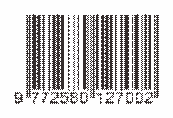The Evaluation of Thermal Comfort using a BIM-based Thermal Bridge Simulation
Abstract
Global warming has become an important issue today, caused by the increasing demand for energy and humans lifestyle. To reduce the impact, more architects started to respond regarding environmental issues. The concept of green architecture promotes to solving this problem. Natural ventilation is the one of the concept green architecture. This research tends to look at the aspect of Thermal Comfort in naturally ventilated mosque buildings through the Thermal Bridges strategy. Naturally ventilated building tend to have better indoor air quality (IAQ), but worse thermal comfort. Therefore, this research investigates the range of acceptable temperature and calculate by BIM thermal bridge simulation to achieve thermal comfort for naturally ventilated mosque building. The method of analysis conducted is quantitative based on direct measurement of weather data and existing comfort conditions in the field, calculations, and simulations using Building Information Modeling (BIM). Data was collected through a field survey in Itenas Mosque Building and were used to develop and validate then using the BIM thermal bridge model for simulation. The data collected from field survey and in situ environmental measurement such as air temperature, relative humidity, and wind velocity. The thermal comfort prediction model was developed from statistical analysis of the field survey data. Based on the result of thermal Bridge simulation using BIM software required exchange material of the existing building to achieve thermal comfort.
Keyword-Thermal comfort, Building Information Modelling, Thermal Bridge Simulation
Full Text:
PDFReferences
Fanger, P.O. “Thermal Comfort, Analysis and Application in Environmental Engineering”, McGraw-Hill Book Company, 1970
Rokooei, Saeed. “Building Information Modeling in Project Management: Necessities,Challenges and Outcomes,”Procedia - Social and Behavioral Sciences 210, 2015, pp:87 – 95
Herr, Christiane M., Thomas Fischer.”BIM adoption across the Chinese AEC industries: An extended BIM adoption model,” Journal of Computational Design and Engineering 6 , 2019,pp173–178
Caetano, Ines., António Leitão.”Integration of an algorithmic BIM approach in a traditional architecture studio ; Journal of Computational Design and Engineering 6, 2019, pp.327–336
Doumbouya, Lancine, Guoping Gao, Changsheng Guan.”Adoption of the Building Information Modeling (BIM) for Construction Project Effectiveness:The Review of BIM Benefits,” American Journal of Civil Engineering and Architecture, Vol. 4, No. 3, 2016, 74-79.
Smith, Peter.”BIM Implementation – global strategies,” University of Technology Sidney, Science Direct, Procedia Engineering 85, 2014 pp. 482-492
Beazley, Scott; Emma Heffernan, Timothy J McCarthy.”Enhancing energy efficiency in residential buildings through the use of BIM: The case for embedding parameters during design,” Science Direct, Energy Procedia 121 ,2017, pp 57–64
Larbi, A. Ben. “Statistical modelling of heat transfer for thermal bridges of buildings”, Energy and Building 37 2005, pp: 945-951,
O’Grady, Malgorzata, Agnieszka A. Lechowska, Annete M. Harte, “ Application of infrared thermography technique to the thermal assessment of multiple thermal bridges and windows”, Energy &Buildings 168, 2018, pp: 347-362
Quinten, Julien and Veronique Feldheim. “ Dynamic modelling of multidimensional thermal bridges in building envelopes: review of existing methods, application and new mixed method,” Energy and Buildings 110, 2016, pp: 284-293
Baba, Fuad, Hua Ge. “ Dynamic effect of balcony thermal bridges on the energy performance of a high-rise residential building in Canada,”Energy Buildings 116, , 2016, pp 78-88, 2016.
http://data.bandung.go.id/dataset/laporan-iklim-kota-bandung-tahun-1976-2017
DOI: https://doi.org/10.17509/jare.v1i2.22304
Refbacks
- There are currently no refbacks.
Copyright (c) 2020 Erwin Yuniar Rahadian

This work is licensed under a Creative Commons Attribution-NonCommercial-ShareAlike 4.0 International License.

This work is licensed under a Creative Commons Attribution-ShareAlike 4.0 International License.








